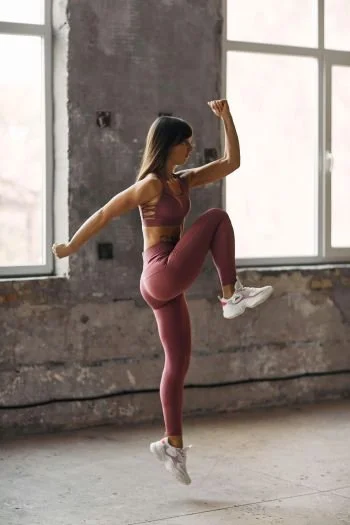Lion Pose (Simhasana) is a playful yet powerful yoga posture that combines physical alignment with vocal release, helping practitioners embody courage, confidence, and emotional clarity.
What is Simhasana (Lion Pose)?
Simhasana, or Lion Pose, comes from the Sanskrit words simha (lion) and asana (pose). It is a posture with various descriptions. Try leaning forward from your knees, or sit on your heels or cross the ankles, place the hands firmly reversed on the ground or palms on knees, spread the fingers wide like claws, open the eyes wide, stick out the tongue, and exhale with a strong “haaa” sound—mimicking a lion’s roar.
This unique combination of posture, breath, and sound makes Simhasana one of yoga’s most expressive and energizing poses.
Why Practice Lion Pose?
Lion Pose is more than a physical stretch—it’s a symbolic release of inner tension. The roaring exhalation represents courage, fearlessness, and the ability to let go of inhibitions. It’s often used to:
Break through self-consciousness
Awaken confidence and vitality
Encourage playful energy in practice
In essence, Simhasana reminds us that yoga is not only about quiet stillness but also about expressive liberation.
Benefits of Lion Pose
Practicing Simhasana regularly offers both physical and emotional benefits:
Relieves tension in the face and throat: Helps relax jaw muscles, vocal cords, and facial expressions
Supports healthy breathing: Encourages deep exhalation and clears the throat
Boosts confidence and courage: Symbolically channels the lion’s fearless energy
Stimulates facial muscles: Improves circulation and can contribute to a youthful glow
Reduces stress and anxiety: The roar acts as a cathartic release of pent-up emotions
Activates chakras: Especially the throat (Vishuddha) and third eye (Ajna), enhancing communication and intuition
How to Do Lion Pose (Step-by-Step)
Start seated: Kneel on the floor, sitting back on your heels (Hero Pose) or cross the ankles with the perineum resting on the heel.
Place hands on knees or floor: Spread the fingers wide like claws, pressing firmly.
Inhale deeply: Lengthen the spine, lifting through the crown of the head.
Exhale with a roar: Open the mouth wide, stick out the tongue toward the chin, open the eyes wide, contract the throat muscles, and exhale with a strong “haaa” sound.
Repeat 2–5 times: Return to neutral, then repeat for several rounds.
Lion Pose is a reminder that yoga is not just about quiet introspection—it’s also about expressing vitality, courage, and playfulness. By practicing Simhasana, you release tension, awaken confidence, and reconnect with your inner roar.












